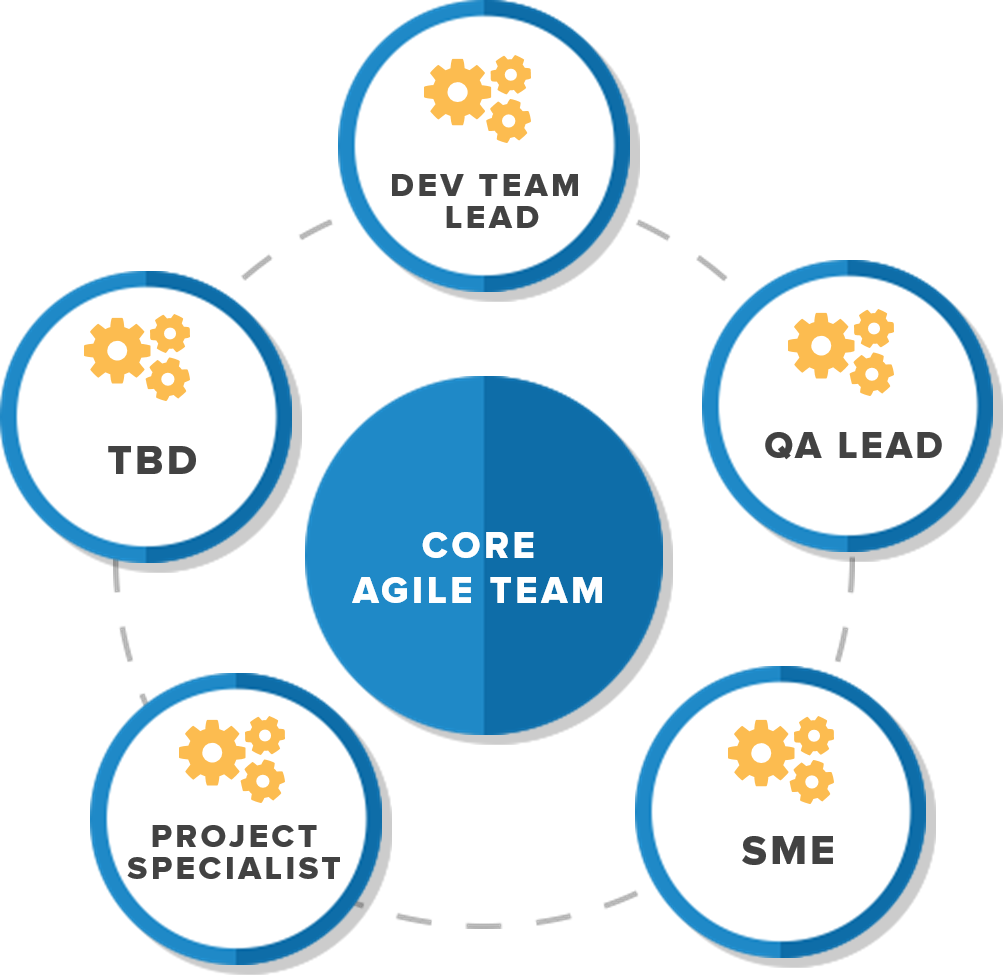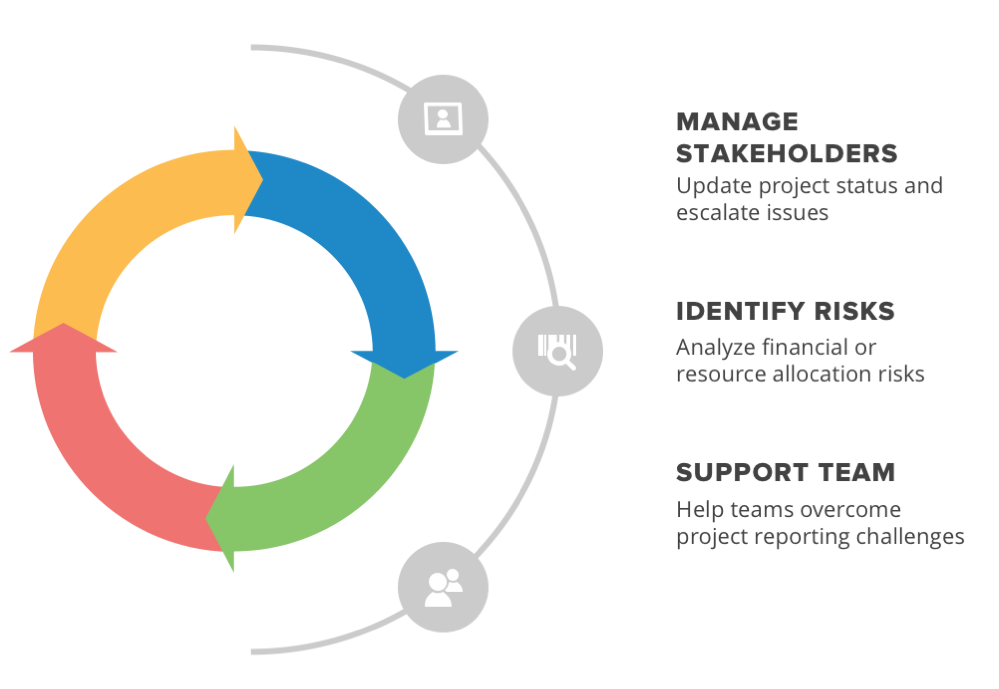Why an Agile Project Manager Will Help Your Team Succeed
In a Software Advice study, we found that small businesses are increasingly using Agile tools and processes. But, as more small and midsize businesses (SMBs) take up Agile project management, questions about the correct way to perform Agile are naturally going to come up.
One of the most common questions is regarding the need for traditional roles, such as project managers, in Agile frameworks. After all, isn’t the Scrum master responsible for managing the project? And since Agile already has product owners and product managers, does it really need a project manager too?
In this report, we explore questions regarding the evolving role of Agile project management. We’ll look at an Agile project manager’s key responsibilities and the reasons why your small business may or may not need one.
Ultimately, we found that small businesses should not completely disregard the need for an Agile project manager. Instead, they must understand the evolving role of project managers to ensure that their Agile team comprises the right people to cover the necessary roles and responsibilities.
Let’s get into the details!
Here’s what we’ll cover:
What is an Agile project manager?
Do Agile teams need project managers?
Dedicate project manager resources to the riskiest projects
Explore new project manager roles to support Agile teams
What is an Agile project manager?
An Agile project manager assists with project planning, such as budget, timeline, and scope, using the Agile framework or Agile methodology. An Agile project manager may also be part of a Scrum team.
An Agile project manager will handle the “business” side of things, such as procurement of resources, contracts, budget reporting, etc., so the Scrum team is solely focused on iterative development.
Although long-term planning is typically not a part of an Agile or a Scrum team, you can’t really eliminate planning altogether—but you also have to be careful to avoid over-planning. For these reasons, the role of the Agile project manager is a bit controversial. Let’s dive into more detail.
Do Agile teams need project managers?
A common disagreement is whether or not you need project managers on Agile teams.
Two opposing views
1. Are ‘Agile’ project managers simply a myth?
One school of thought believes that Agile project managers are nothing but a myth. After all, landmark works such as the Agile Manifesto or the Scrum Guide make no mention of project managers.
The argument is that the project manager’s traditional role of tracking the team’s performance, efficiently allocating resources, and charting out detailed project plans is antithetical to self-organizing teams that plan, manage, and track their own work.
When this doesn’t make sense: While the logic behind Agile project management is based around eliminating the need for long-term planning—one year or more before projects are underway—this doesn’t mean that Agile projects can do away with planning altogether.
For instance, planning the project budget, task timelines, and promising key deliverables with Agile contracts is necessary if you’re a small business working with external clients. In this case, you need project managers skilled at creating the project plans that you’ll present to clients when signing the contract.
2. Are Agile project managers a practical necessity?
The other side maintains that project managers are necessary because businesses still need to manage budgets, allocate resources, and identify project risks.
They go on to say that the assumption that Agile team members will automatically pick up those responsibilities is essentially flawed. And, in the “real world” where projects have to meet specific targets and businesses have to work within constraints, project managers are essential to ensure things run smoothly.
When this doesn’t make sense: One thing that will surely ruin the momentum of an Agile team is over-planning.
For example, Scrum teams hold sprint planning meetings to commit to tasks the development team will complete in a time-boxed (one week to one month) event. And, one of the key factors behind sprint planning failures is when teams spend too much time in these meetings.
Teams that are led by traditional project managers, who typically stress the importance of planning, can waste hours discussing the details of a feature and planning how to build it.
Walking the fine line
While both of the above views have their merits, we have seen how in certain scenarios, these arguments don’t hold up.
The answer to whether your business needs project managers therefore lies in understanding out how extensive your need for project planning is.
Let’s dig deeper into the reasons why and when small businesses need Agile project managers.
Dedicate project manager resources to the riskiest projects
In the Gartner report, “Not Every Project Needs a Project Manager” (full content available to clients), research VP Lars Mieritz offers two key recommendations for enterprises:
Help smaller, self-managed teams manage their work by creating a project specialist role.
Save project managers with the most experience dedicated to working on complex projects for your most critical or risky projects.
While the above report is written for large organizations that have project management offices (PMOs), the recommendations are relevant for small businesses, as well.
For instance, small businesses that have limited financial and human resources should judiciously allocate project managers for handling “complex and critical projects.”
These “critical” projects include those that need detailed scope analysis, collaboration between multiple teams, complex stakeholder management and constant project tracking of what’s going well—and what’s not—to quickly identify risks.
SMBs should keep these points in mind and only designate project managers for critical projects that require 400+ hours of work.
On the other hand, if your business has small teams (one to five team members) that work on projects requiring fewer than 400 hours of work, you’ll benefit more by designating a project specialist role.
What is the project specialist role, and how does it differ from a project manager?
The project specialist is responsible for creating the project schedule, analyzing risks, and ensuring that the team delivers high-quality projects within the estimated time and budget.
However, the project specialist is not someone dedicated to the PM role, but an existing member of the core Agile team to whom you offer project manager responsibilities. As we can see in the image, the project specialist does not exist independent of the team.

A version of this image originally appeared in the Gartner report, “Not Every Project Needs a Project Manager” (full content available to clients)
To sum it up, the key difference between a project manager and project specialist is that the former is a leadership role dedicated to governing the team, while the latter is a person that takes cares of basic project management but does not conduct advanced project planning for the team.
A key point to remember is that the project specialist should be used for small teams and should actively work alongside other team members, such as the subject matter expert (SME) and development lead/Scrum master to engage with stakeholders.
Top recommendations:
Save your project managers for complex and critical projects that require more than 400+ hours of work.
Create a project specialist role for managing small projects where team members are mostly working out of the same location and coordination is not a challenge.
Don’t assign project specialists to a team that is facing internal conflicts or handling high-risk projects, as this is not a leadership role but someone who can handle a few necessary project management aspects for the small team.
Explore new project manager roles to support Agile teams
In a survey conducted by VersionOne, a large number of respondents say their organizations still don’t have mature Agile practices in place. This report should raise the alarm for SMBs, because nearly 40% of the total respondents work for small organizations with fewer than 1,000 employees.
A clear sign that your business lacks mature Agile practices is that your team doesn’t have clarity on their roles and responsibilities. For example, businesses just starting with Scrum face project failure if their team lacks a clear understanding of Agile roles.
This confusion occurs primarily when SMBs s**tick rigidly to predefined Agile roles without considering their team’s needs or business priorities.**
In Agile project management, the focus is on continuously improving products instead of managing time-bound projects. As a result, roles such as Scrum master and product owner have emerged. These team members take on tasks such as tracking project and managing schedules, which were historically handled by project managers.
However, small businesses typically have budget and human resource constraints which can lead product owners to overcompensate and take on additional tasks. This reduces their efficiency as they deviate from executing their core tasks of managing stakeholder expectations and conducting market research to project governance such as tracking the work of development teams.
Instead, explore evolving project manager roles to support product owners, Scrum masters, and the team.
An example of such a role that small businesses should establish is the “protector project manager,” which according to Gartner (full content available to clients only), is one of the new roles of project managers involved in solutions delivery projects.
What is a protector project manager and how is it different from a traditional project manager?
The protector project manager helps to remove distractions, allowing product owners to focus on their key tasks and helping the development team in project execution. Here’s a graphic to explain this person’s key responsibilities:
Role of the ‘protector project manager’ during delivery

The protector project manager is essentially a project manager “lite.” One key difference is that the protector project manager acts to remove outside distractions for the delivery team and product owner by taking up status reporting and stakeholder communication responsibilities.
A typical project manager, on the other hand, does all this as well as project planning, creating budgets, and tracking project KPIs.
Top recommendations:
Establish a protector project manager only if your product owners are facing challenges in managing the team.
Create this role if project status reporting and managing stakeholders is a key requirement. This is typical of small businesses working on client projects.
Next steps for your business
The Gartner report, “Become an Agile Superhero: 8 Attributes for Success,” points out that successful Agile teams are those that have sound knowledge about Agile processes and techniques (full content available to clients).
Establishing a sound Agile process does not mean that you should blindly follow Agile definitions without analyzing their suitability to your business priorities.
If you’re a small business facing Agile project management issues, begin by analyzing the current roles and responsibilities on your teams.
Here are the key takeaways:
Explore new Agile project manager roles such as the project specialist and protector project manager to support product owners and delivery teams.
If you’re a business with microteams, then there’s no real requirement for a traditional project manager. Establishing a project specialist role instead would be more beneficial.
If your business has teams that are constantly missing their deadlines or facing issues with project quality, then establishing a protector project manager role is a viable option. This is especially true for businesses working on client-facing projects.
In a similar vein, you must also have clearly defined roles for not just team members, but for anyone who can influence the project outcome. The inability to identify project stakeholders and understand their roles can lead to project failure.
Leveraging the right Agile project management solutions can help your team perform their roles and responsibilities.
Agile project management solutions are designed to suit the workflows of Agile teams, including tracking progress of tasks in iterations (teams following Scrum) or managing tasks in a continuous flow (teams following Kanban).
Further reading:
Learn more about Agile project management processes and tools by reading these select reports and buyers guides: